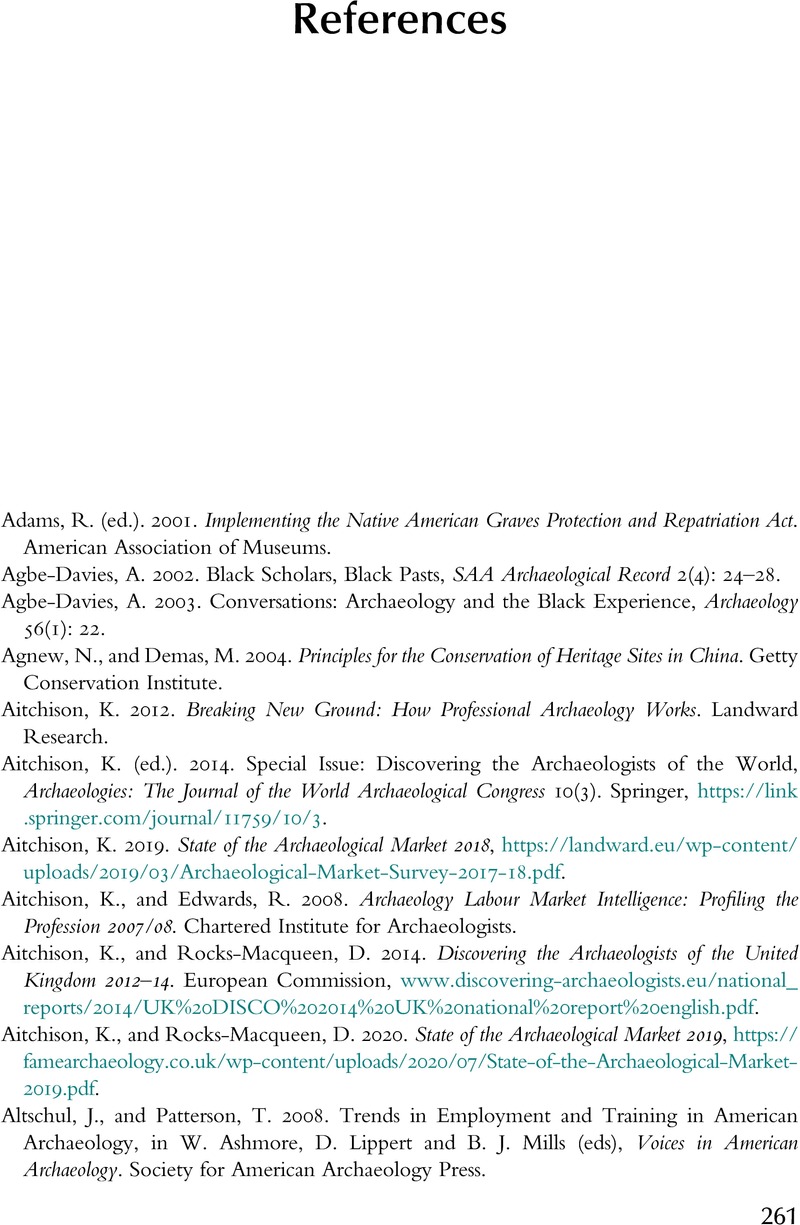Book contents
- Becoming an Archaeologist
- Becoming an Archaeologist
- Copyright page
- Dedication
- Contents
- Figures and Tables
- Preface and Acknowledgements for the First Edition
- Preface to the Second Edition
- Acknowledgements for the Second Edition
- Introduction
- Chapter 1 What Is – and Isn’t – Archaeology?
- Chapter 2 Skills and Training in Archaeology
- Chapter 3 Cultural Resource Management
- Chapter 4 Academic Archaeology
- Chapter 5 State and Local Government Archaeology
- Chapter 6 Federal and Central Government Archaeology
- Chapter 7 Public and Community Archaeology
- Conclusion
- Book part
- References
- Index
- References
References
Published online by Cambridge University Press: 27 October 2022
- Becoming an Archaeologist
- Becoming an Archaeologist
- Copyright page
- Dedication
- Contents
- Figures and Tables
- Preface and Acknowledgements for the First Edition
- Preface to the Second Edition
- Acknowledgements for the Second Edition
- Introduction
- Chapter 1 What Is – and Isn’t – Archaeology?
- Chapter 2 Skills and Training in Archaeology
- Chapter 3 Cultural Resource Management
- Chapter 4 Academic Archaeology
- Chapter 5 State and Local Government Archaeology
- Chapter 6 Federal and Central Government Archaeology
- Chapter 7 Public and Community Archaeology
- Conclusion
- Book part
- References
- Index
- References
Summary

- Type
- Chapter
- Information
- Becoming an ArchaeologistA Guide to Professional Pathways, pp. 261 - 270Publisher: Cambridge University PressPrint publication year: 2022



